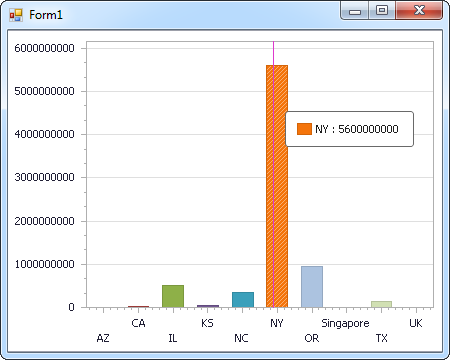Discover how a bimodal integration strategy can address the major data management challenges facing your organization today.
Get the Report →DataBind Phoenix Data to the DevExpress Data Grid
Use the CData ADO.NET Provider for Phoenix with the DevExpress Windows Forms and Web controls to provide Phoenix data to a chart.
The ADO.NET Provider for Phoenix by CData incorporates conventional ADO.NET data access components compatible with third-party controls. You can adhere to the standard ADO.NET data binding procedures to establish two-way access to real-time data through UI controls. This article will demonstrate the utilization of CData components for data binding with DevExpress UI Controls (Windows Forms and Web controls), specifically binding to a chart that visualizes live data.
Connect to Apache Phoenix via the Phoenix Query Server. Set the Server and Port (if different from the default port) properties to connect to Apache Phoenix. The Server property will typically be the host name or IP address of the server hosting Apache Phoenix.
Authenticating to Apache Phoenix
By default, no authentication will be used (plain). If authentication is configured for your server, set AuthScheme to NEGOTIATE and set the User and Password properties (if necessary) to authenticate through Kerberos.
Windows Forms Controls
The code below shows how to populate a DevExpress chart with Phoenix data. The ApachePhoenixDataAdapter binds to the Series property of the chart control. The Diagram property of the control defines the x- and y-axes as the column names.
using (ApachePhoenixConnection connection = new ApachePhoenixConnection(
"Server=localhost;Port=8765;")) {
ApachePhoenixDataAdapter dataAdapter = new ApachePhoenixDataAdapter(
"SELECT Id, Column1 FROM MyTable WHERE Id = '123456'", connection);
DataTable table = new DataTable();
dataAdapter.Fill(table);
DevExpress.XtraCharts.Series series = new DevExpress.XtraCharts.Series();
chartControl1.Series.Add(series);
series.DataSource = table;
series.ValueDataMembers.AddRange(new string[] { "Column1" });
series.ArgumentScaleType = DevExpress.XtraCharts.ScaleType.Qualitative;
series.ArgumentDataMember = "Id";
series.ValueScaleType = DevExpress.XtraCharts.ScaleType.Numerical;
chartControl1.Legend.Visibility = DevExpress.Utils.DefaultBoolean.False;
((DevExpress.XtraCharts.SideBySideBarSeriesView)series.View).ColorEach = true;
}

Web Controls
The code below shows how to populate a DevExpress Web control with Phoenix data. The ApachePhoenixDataAdapter binds to the Series property of the chart; the Diagram property defines the x- and y-axes as the column names.
using DevExpress.XtraCharts;
using (ApachePhoenixConnection connection = new ApachePhoenixConnection(
"Server=localhost;Port=8765;"))
{
ApachePhoenixDataAdapter ApachePhoenixDataAdapter1 = new ApachePhoenixDataAdapter("SELECT Id, Column1 FROM MyTable WHERE Id = '123456'", connection);
DataTable table = new DataTable();
ApachePhoenixDataAdapter1.Fill(table);
DevExpress.XtraCharts.Series series = new Series("Series1", ViewType.Bar);
WebChartControl1.Series.Add(series);
series.DataSource = table;
series.ValueDataMembers.AddRange(new string[] { "Column1" });
series.ArgumentScaleType = ScaleType.Qualitative;
series.ArgumentDataMember = "Id";
series.ValueScaleType = ScaleType.Numerical;
((DevExpress.XtraCharts.SideBySideBarSeriesView)series.View).ColorEach = true;
}







